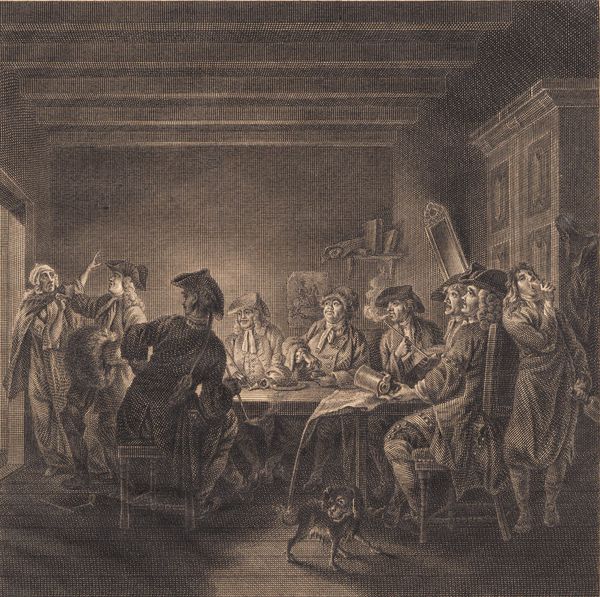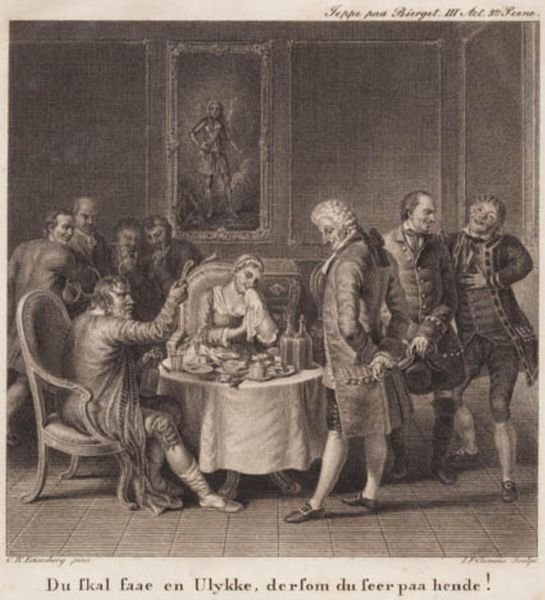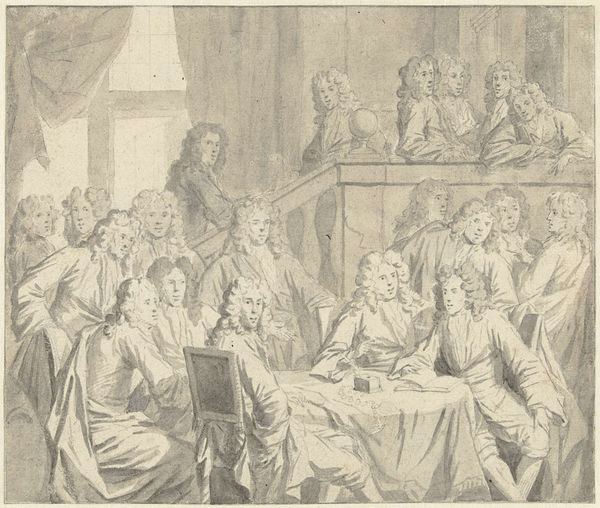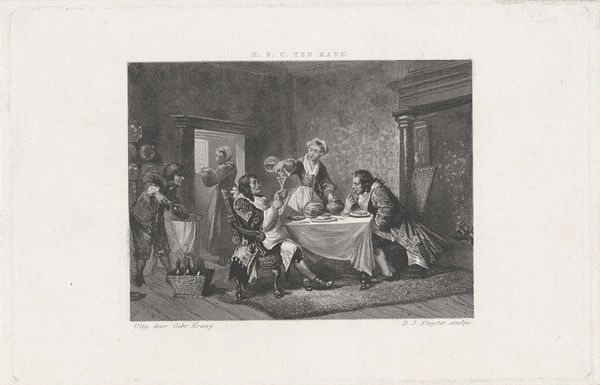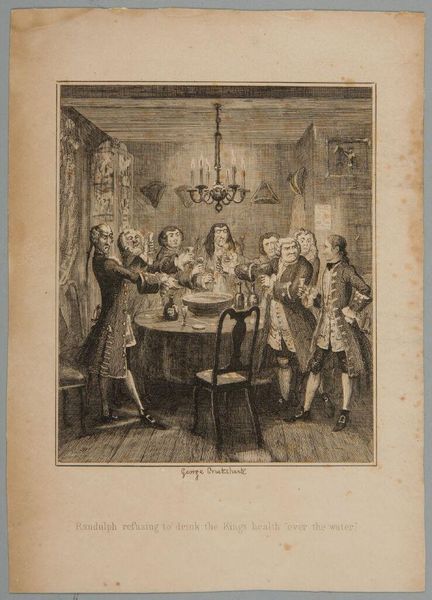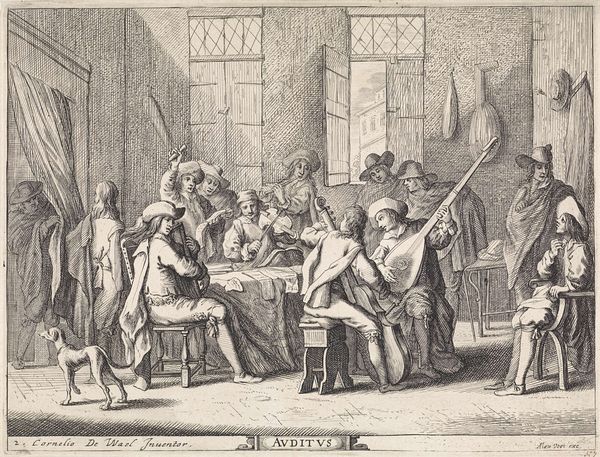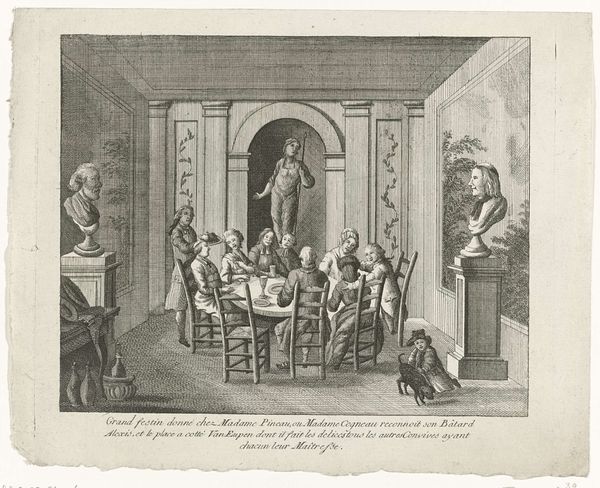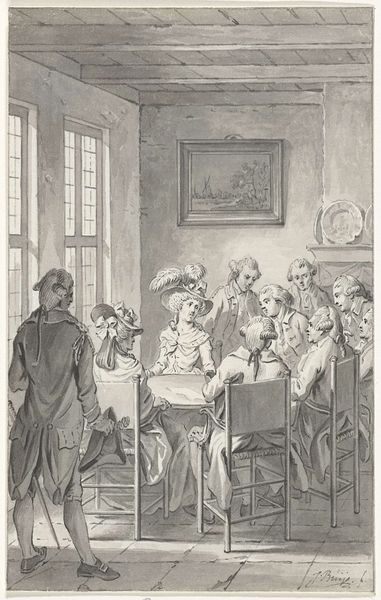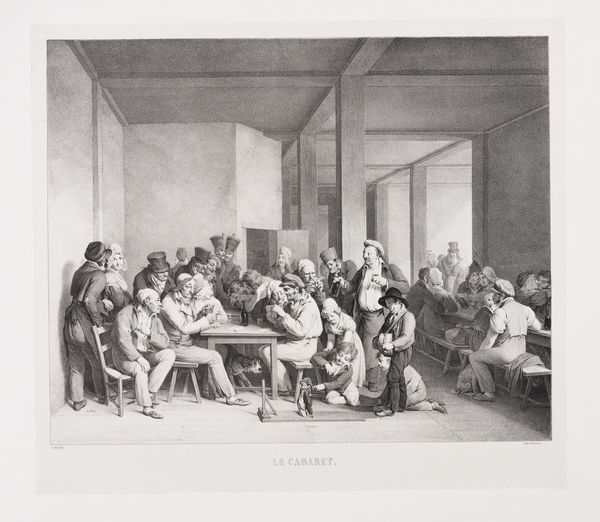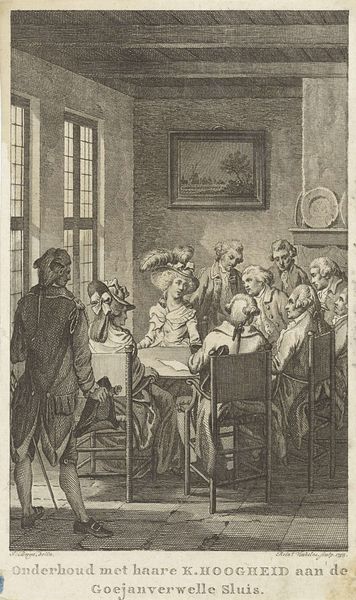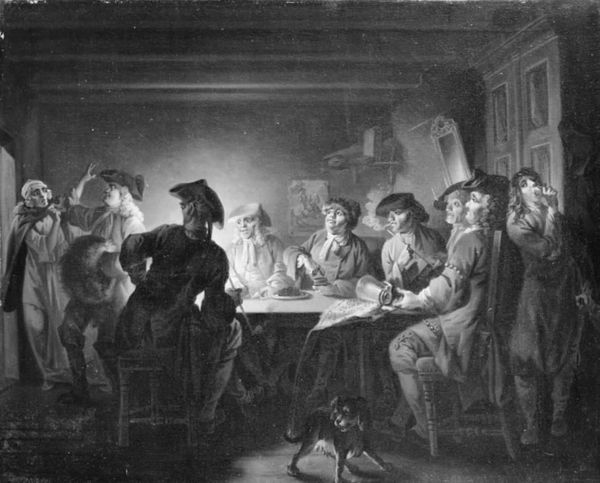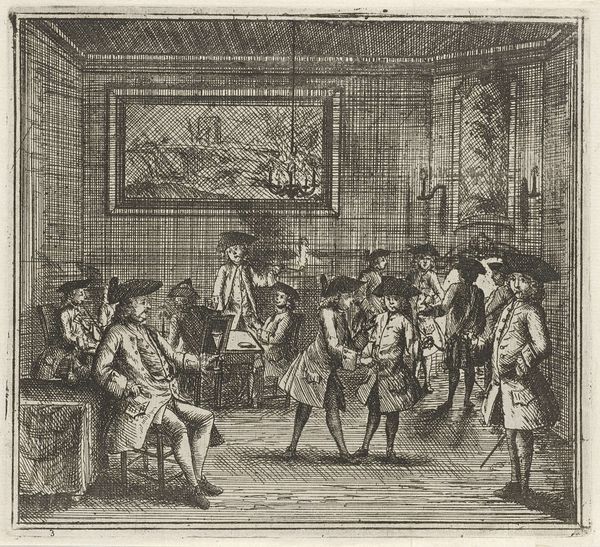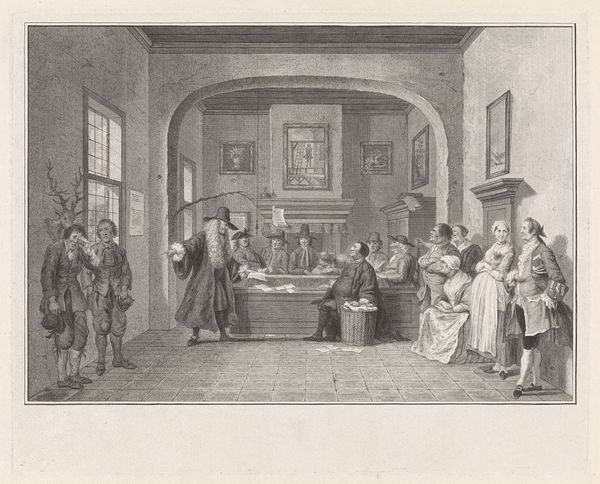
Den politiske kandestøber. ”Havde jeg ikke været en Politikus, da skulle du have fået skam.” Gravering efter Lorentzens Holberg Galleri. 1823 - 1831
0:00
0:00
print, engraving
#
portrait
#
narrative-art
# print
#
figuration
#
romanticism
#
genre-painting
#
history-painting
#
engraving
Dimensions: 269 mm (height) x 213 mm (width) (bladmaal), 189 mm (height) x 181 mm (width) (plademaal), 159 mm (height) x 159 mm (width) (billedmaal)
Curator: Well, this feels like a rather charged tavern scene! All these stern faces gathered around a table... There's tension in the air. Editor: Indeed. What you are perceiving dates back to the period between 1823 and 1831. This engraving by J.F. Clemens is actually after Lorentzen’s Holberg Galleri. The title translates to something like "The Political Tinker. Had I not been a politician, I would have put you to shame!" which is quite a mouthful. It's part of a larger commentary, I think, on political posturing. Curator: A political tinker, that’s funny, and I see it now! The dark hatching makes everyone seem caught between drama and satire; the fellow lunging from the doorway, wig askew, it could be a comedy routine stopped mid-punchline. Does it speak to a specific scandal, or a mood about politics in general? Editor: It points directly back to Ludvig Holberg’s play “The Political Tinker,” a satirical work. So, it speaks to broader themes of social mobility, ambition, and the absurdity of class pretensions through this play. Clemens, through this engraving, further disseminates these social and political critiques into public. It shows how theater served as a mirror reflecting—and refracting—society back to itself. Curator: Absolutely! And isn't it interesting that Clemens chose engraving, such a detailed and reproducible medium, to translate the original play? It spreads the word, as it were. To me it emphasizes the "type" each character is playing rather than the personal emotions of any individual on that scene, almost a social comment frozen in print. Editor: Exactly. The act of making prints allows multiple people to own an image, taking it away from the sole possession of elite. It democratizes satire, rendering public opinion palpable, especially during periods ripe with growing civic awareness and social contestations. These characterisations critique from an everyman's position! Curator: A clever democratizing, in itself, given its focus. What a scene it creates, too, with its controlled fury! What do you suppose Holberg himself would have made of Clemens' engraving, given he had such strong notions of class distinction? Editor: I wonder! I am quite sure this artwork must have kept debates alive within literate circles then, as it keeps us thinking now. Curator: Yes, and somehow still resonant now in our hyper-political modern day... The faces might have changed, but the tune...
Comments
No comments
Be the first to comment and join the conversation on the ultimate creative platform.
